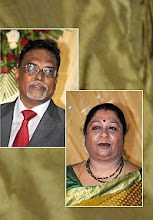Life in a street-smart city
CITYSCAPE If you want to understand Chennai, dig into the life and times of people who've lent their names to its roads and streets, says Bishwanath Ghosh
Spare a thought
Chennai is the only metro in the country where every single tarred stretch — even an apology for a street — bears a name. It is a practice being followed meticulously right from the days of the East India Company, when a street or road would be named after its earliest or most influential resident. But how often have you wondered about the people who've lent their names to the roads and streets that you traverse every day? For example, you may be a frequent visitor to Sathyam Cinemas, entering its parking lot through Whites Road, but how often have you asked yourself, “Who was Whites?”
The road is named after one Mr. J. D. White, who obtained a grant of land in 1809 and built a house there. In 1832, the house went on to become the Madras Club — the first club in the city and for long considered the best in India, hailed as the “Ace of Clubs”. The club moved out of the premises post-Independence and the building was demolished as recently as in 2003. Today in its place stands Express Avenue, the city's hippest mall.
Connecting White's Road with Mount Road is Patullo's Road, named after Archibald Erskine Patullo, a captain in the Madras Cavalry who died in 1824 when commanding the Body Guard. Shortly before he died, he lived in a house called Hick's Bungalow, which also become part of the Madras Club premises.
Nearby is Wood's Road, which houses the oldest Fabindia outlet in the city. It takes its name from Edward Wood, a civil servant who, as the chief secretary to government, owned a house there in 1822. The house later became the Castle Hotel.
Both Patullo's Road and Wood's Road join Mount Road at points that are very close to the junction it forms with Commander-in-Chief Road, now known as Ethiraj Salai (one of the few Indian road-names people have gotten used to). The Commander-in-Chief Road was named so because in the early 19th century, the Commander-in-Chief lived close by, in Egmore, in a building that became the Victoria Hotel.
But not all of it is officially Ethiraj Salai. The small stretch starting from the Spencer Plaza junction up to the bridge over Cooum is still called Binny's Road — named after John Binny, who entered the service of the Nawab of Arcot around 1797. His residence subsequently became the Imperial Hotel, which later came to be occupied by Messrs. Spencer & Co. and the Connemara Hotel. A newly-erected blue-and-white signboard at the junction, identifying the short stretch, will ensure that Mr. Binny is not forgotten for many more years to come.
And who is Mr. Ethiraj of Ethiraj Salai? Many may know of him, many others may not. V. L. Ethiraj was a barrister known for his charm and brevity, and one of his biggest successes was to secure, in 1947, the release of two highly-respected actors, M. K. Thyagaraja Bhagavathar and N. S. Krishnan, who had been convicted for the murder of film journalist C. N. Lakshmikanthan that took place in November 1944.
Before moving on to more Indian names, let's identify some more Britishers who lent their names to some of the posh roads of Chennai. Both George John Haddow and William Harrington — the men behind Haddow's and Harrington Roads respectively — were civil servants who lived some 200 years ago. Henry Sullivan Graeme was also a civil servant from that era, even though the road that takes his name is no longer known as Graeme's Road but has been corrupted, irreversibly, as Greams Road. Sterling Road, once upon a time a cart-track, was so named because one Mr. L. K. Sterling happened to own a property adjacent to it in the early 19th century. Sterling was a soldier who went on to become a sessions judge.
Now let's come towards T. Nagar, which came into being in the 1920s, when Indians had become part of governance. Panagal Park is named after the Raja of Panagal, the Justice Party chief minister of the Madras Presidency responsible for the creation of T. Nagar. Pondy Bazaar is believed to derive its name from Soundarapandian Nadar, yet another Justice Party leader — it's most likely that Pandi got corrupted into Pondy. Close by is the all-important Doraiswamy subway, which has been named after Dr. T. S. Doraiswamy, a well-known eye doctor who lived in that area.
The most crowded street
Ranganathan Street, easily one of the most crowded streets on this planet, is said to have been named so on the request of Tupil Rangaswamy Iyengar (Tupil being the Anglicised corruption of Thoopul, a place near Kancheepuram), a sub-collector of Madras who came to live on the street. When civic authorities sought his permission to name the street after him, Rangaswamy, a god-fearing man, suggested that it be named instead after Lord Ranganatha.
The story of Chennai is the sum total of the stories behind the names of its numerous roads and streets. The more you dig into the names, the clearer the picture will emerge about India's oldest modern city — in case you are interested to know, that is.
__________________________________
Labels: Chennai







0 Comments:
Post a Comment
<< Home